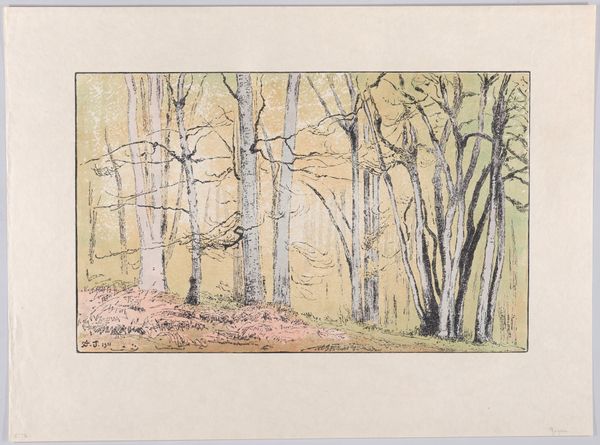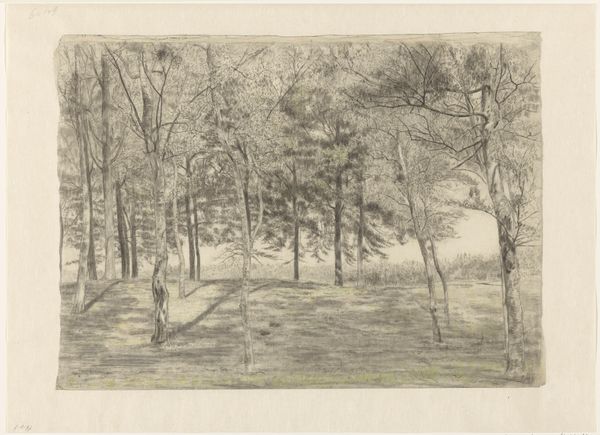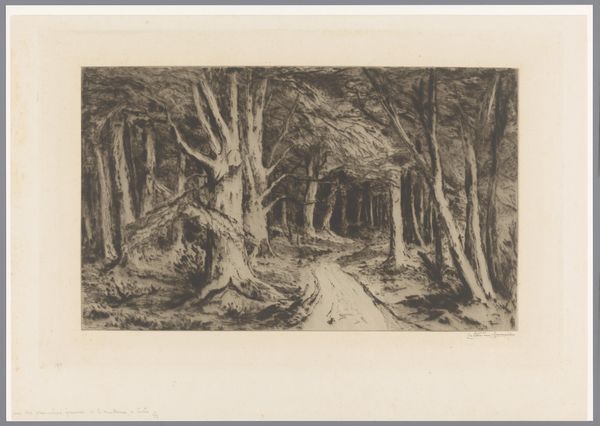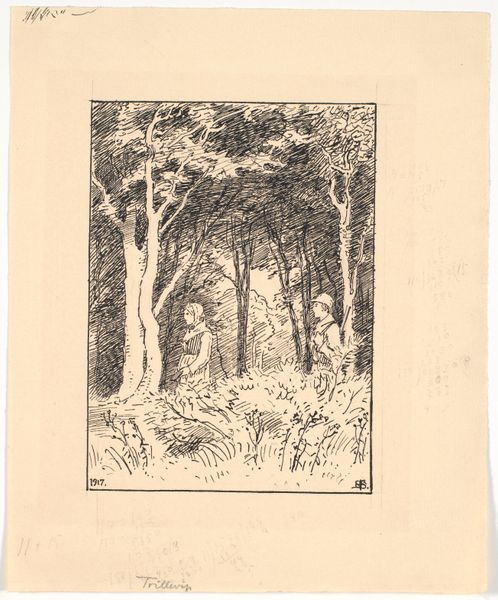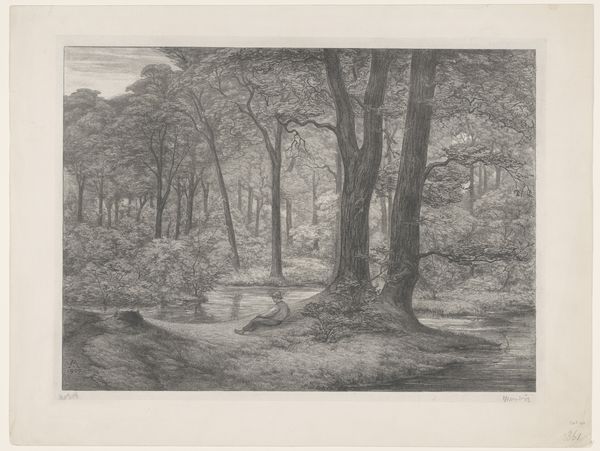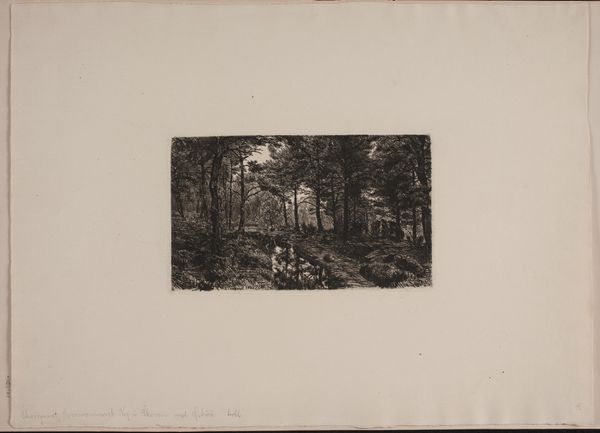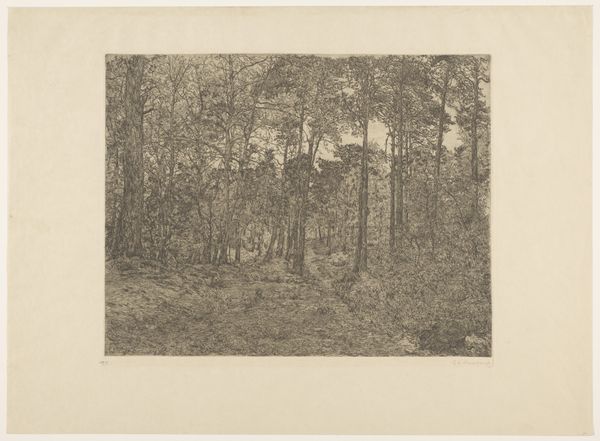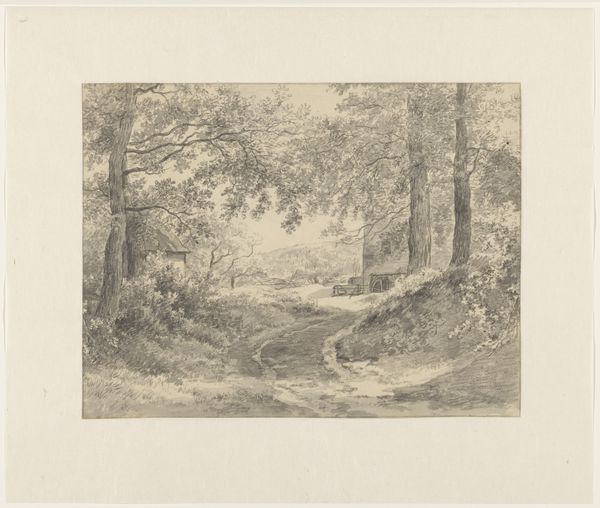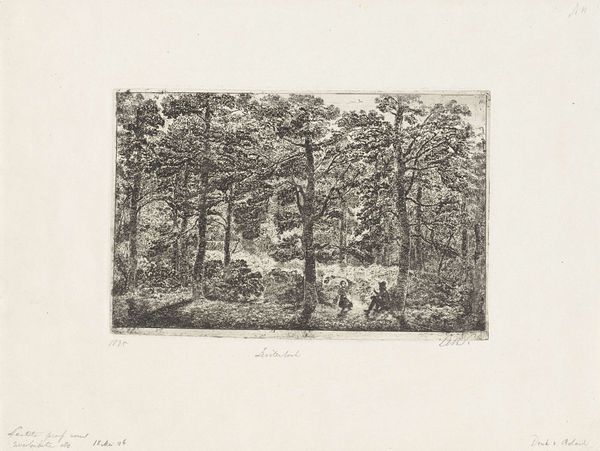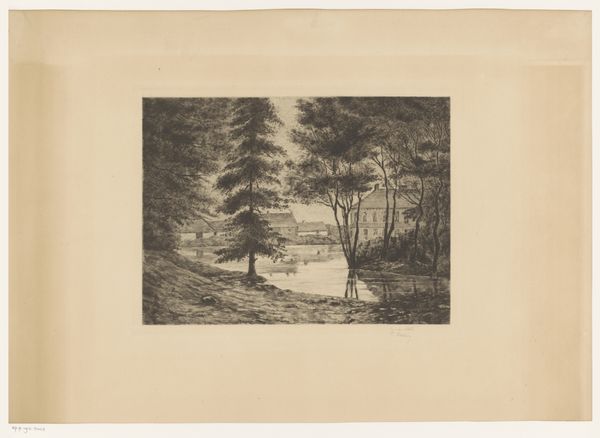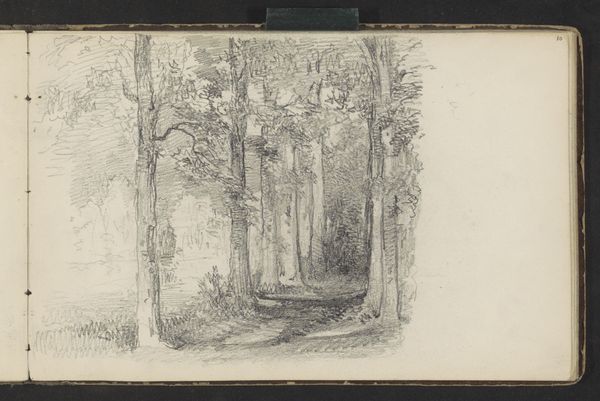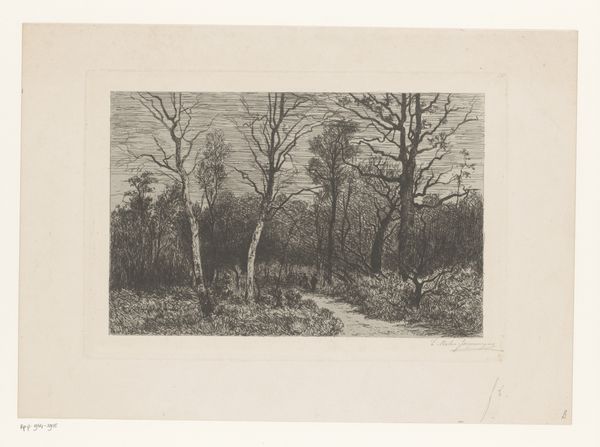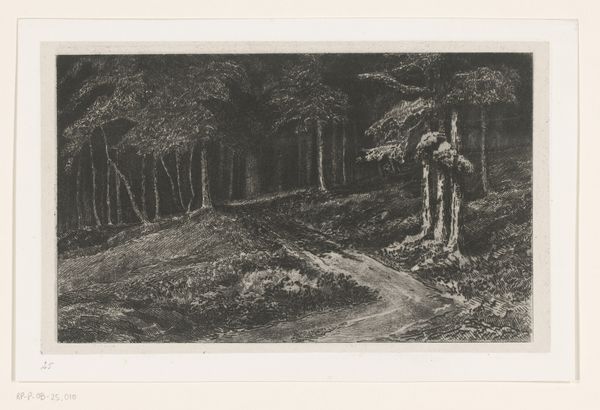
Dimensions: height 196 mm, width 298 mm
Copyright: Rijks Museum: Open Domain
Editor: Here we have Willem Wenckebach's "Kerstboombos," a watercolor painting from 1898 at the Rijksmuseum. It feels so whimsical and a little eerie, seeing a forest full of tiny Christmas trees. What stands out to you about this piece? Curator: It's fascinating to consider the material context. Watercolors, often seen as preparatory or amateur, elevated to depict this somewhat bourgeois scene. This contrast raises questions: What kind of paper was used? Was it mass produced or hand made, and what does that tell us about accessibility and consumerism? Look at the delicate application, almost denying labor in the pursuit of leisure. Editor: I hadn't thought about the choice of watercolor like that. Do you think the trees themselves represent something about labor too? Curator: Absolutely! Where did these miniature trees come from? Were they cultivated or foraged? The materials signify a controlled nature, crafted for domestic consumption. Those tiny lights or candles... factory produced goods displayed in a “natural” setting. Notice the irony of commodifying nature within the supposedly pure landscape tradition. It is critiquing the values around Christmas. Editor: So, you're saying it's less about a pretty Christmas scene and more about the socioeconomic implications of the holiday itself? Curator: Precisely! It compels us to consider art not just as a visual object, but as a product reflecting labor, commodity culture and social aspirations. Editor: I will never see festive images the same way! That’s been such an enlightening way to understand art history. Curator: Agreed! By exploring the materiality and context, we gain deeper insights into its social and economic underpinnings.
Comments
No comments
Be the first to comment and join the conversation on the ultimate creative platform.
